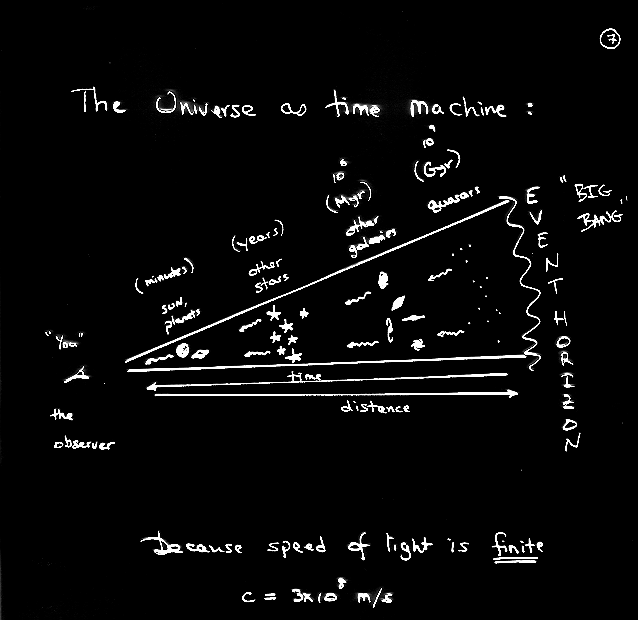Astro 1 - Lecture 40
Matthew A. Bershady
Department of Astronomy & Astrophysics
Penn State University
Fall 1996
This document may not be copied for sale
All Rights Reserved
© 1995 Matthew A. Bershady
 Lectures Lectures  |
Lecture page |
|
 /year fall into
a massive black hole
/year fall into
a massive black hole  Ultra-massive central black holes in a few galaxies today
Ultra-massive central black holes in a few galaxies today  Moderately massive central black holes in most galaxies today
Moderately massive central black holes in most galaxies today  nearby objects are low-luminosity
nearby objects are low-luminosity  distant objects are high-luminosity
distant objects are high-luminosity 
 Hot Big Bang
( t = 0 sec )
Hot Big Bang
( t = 0 sec )  inflation
( t = 10-34 sec )
inflation
( t = 10-34 sec )  baryogenesis
( t = 10-15 sec )
baryogenesis
( t = 10-15 sec )  nucleosynthesis ( t = 100 sec )
nucleosynthesis ( t = 100 sec )  decoupling
( t = 1 Myr )
decoupling
( t = 1 Myr )  galaxy and quasar formation ( t = 1 Gyr )
galaxy and quasar formation ( t = 1 Gyr )  today ( t = 10 Gyr )
today ( t = 10 Gyr )  x 107 s/yr
x 107 s/yr  density, curvature, and geometry (Lecture 42!)
density, curvature, and geometry (Lecture 42!)